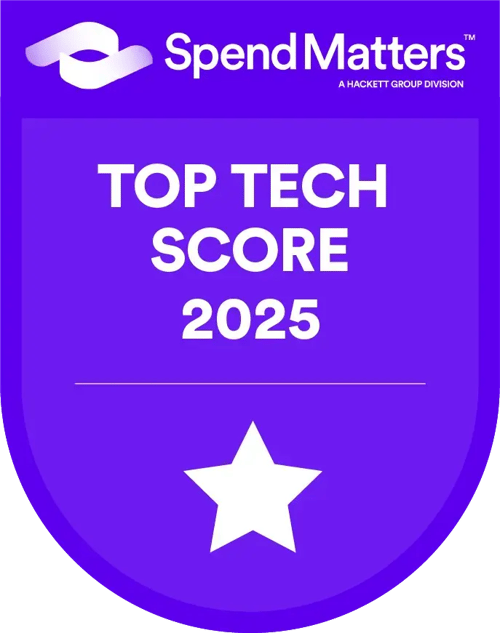Modern slavery can be defined as the recruitment, movement, harboring or receiving of human of all ages through the use of force, coercion, abuse of their vulnerable position, deception or other means for the purpose of exploitation for commercial or personal benefit (UK Government).
In this article, we'll address what modern slavery is and how procurement can work to mitigate it.
Examples of modern slavery
Over 40 million people are reported to be enslaved in some way worldwide. The top 6 countries of origin for potential victims were Albania, Vietnam, Nigeria, Romania, the UK, and India. Modern slavery generates an estimated US $150 billion in illegal profits per year.
Causes for modern slavery are complex and include poverty, inequality, discrimination, conflict and humanitarian crises, criminality, corruption, and unreasonable cost pressures through supply chains.
Modern slavery takes many forms. The most common types of modern slavery are:
- Human trafficking. The use of violence, threats or coercion to transport, recruit or harbor people in order to exploit them for purposes such as forced prostitution, labor, criminality, marriage or organ removal.
- Forced labor. Any work or services people are forced to do against their will under threat of punishment.
- Debt bondage/bonded labor. The world’s most widespread form of slavery. People trapped in poverty borrow money and are forced to work to pay off the debt, losing control over both their employment conditions and the debt.
- Descent–based slavery. Most traditional form, where people are treated as property, and their “slave” status was passed down the maternal line.
- Slavery of children. When a child is exploited for someone else’s gain. This can include child trafficking, child soldiers, child marriage and child domestic slavery.
- Forced and early marriage. When someone is married against their will and cannot leave. Most child marriages can be considered slavery.
Modern slavery legislation
In the UK, the Modern Slavery Act came into force in 2015. It requires organizations with a turnover exceeding £36m (incl. subsidiaries) which supply goods and services in the UK to report annually. They must publish an annual statement explaining what they are doing to eliminate slavery from their businesses and supply chains.
The UK Government supplies specific guidance to help both suppliers and buyers within the public service to understand the risks of modern slavery in supply chains and take appropriate action to identify and address those risks.
Australia followed in 2018 with its Modern Slavery Act. The Australian legislation requires organizations based or operating in Australia, with a turnover exceeding AUD $100 million, to report annually. They must identify the risks of modern slavery in their operations, the actions taken to address those risks and the effectiveness of those actions. Other entities may report voluntarily. The Modern Slavery Statements Register is accessible by the public, free of charge, on the internet. Learn more.
The European Union (EU) does not have equivalent legislation to the UK or Australia but legislation is in constant evolvement. The EU has now issued guidance on “forced labor” risks in operations and supply chains. Guidance is not legally binding yet. However, it is a sign of what is coming up. Learn more.
Belgium is an early adopter of modern slavery and due diligence legislation. In 2021 the Federal Parliament voted in favor of a due diligence bill to strengthen the obligations of companies to identify and prevent human rights violations and to mitigate social and environmental risks in their supply chains. It includes criminal sanctions and compensation for victims. Learn more.
Modern slavery risk areas
Corporate social responsibility (CSR) risks differ between organizations and across procurement categories. Every organization should assess their level of modern slavery risk as far down their supply chain as possible.
In high-risk procurement categories, clearly defined policy should be tied to sourcing and contracting. Knowing your supplier and visiting sites for audit purposes helps mitigate some risks.
Areas of high CSR risk can include:
- Urgent changes to orders or delivery times
- Sub-contracting of labor
- Orders without a contract in place
- Short-term supplier contracts and relationships
- Unrealistic cost pressure
- High volatility in order volumes
- Frequent changes in the specification
According to the Chartered Institute of Purchasing and Supply (CIPS), modern slavery is more likely to occur in the following instances:
- Inadequate laws and regulations, weak or non-existent enforcement of legislation, and poor business and government accountability
- High levels of poverty among workers
- Widespread discrimination against certain types of workers (e.g. women and ethnic groups)
- Widespread use of migrant/ casual workers
- Conflict zones and areas of humanitarian crisis
- Specific high-risk industries (typically labor-intensive industries and raw materials).
Forced labor in supply chains
The International Labour Organisation (ILO) estimates that there are 25 million people in forced labor across the world. This is the category that is of most concern to procurement.
Workers are controlled through penalties for incurred ‘debts’ that they are unable to pay back. Victims are often threatened if they attempt to leave so they are effectively ‘owned’ by their employers.
How to prevent modern slavery in supply chain?
Detecting slavery requires persistence and effort. Procurement is well-positioned to tackle the social responsibility challenges and prevent exploitation.
Procurement has a responsibility to perform due diligence on new and current suppliers for many reasons: financial, operational, behavioral, and ethical.
Firstly, there must be a policy and code of conduct in place that defines supplier behavior relating to modern slavery and forced labor. An extract from the global financial services company EY’s policy:
"Where we are satisfied that it is a supplier with whom we want to engage, we then negotiate appropriate terms with them. Adherence to local laws and regulations regarding modern slavery is a non-negotiable item."
Procurement has an influence on the level of due diligence and how suppliers and RFx responses are evaluated. The code of conduct sets out the standards of behavior expected and defines the buying company’s approach to modern slavery.
This should include how to report breaches of conduct and have systems in place to protect whistleblowers.
There must be risk management processes in place to identify risks and areas of improvement. Unfortunately, bad practices are not always detected in formal audits.
Independent auditing of key supply sites is recommended. Ethical audits and corrective action reports are commonly used practices to foster social responsibility. The emphasis must be on transparency as well as compliance.
The buying company should show a willingness to work with suppliers to address areas of improvement. As a last resort, it may be necessary to exit the relationship and seek alternative sources of supply.
Finally, high-cost pressure increases the risk of misconduct and exploitation. Having an open dialogue, supporting fair trade practices, and setting realistic market price expectations are ways to prevent misconduct in the supply chain.
How can procurement approach modern slavery?
-
Ensure that ethical practices are tied to procurement culture, policy and processes. Attach code of conduct as part of contract appendices.
-
Build awareness in the procurement team, among stakeholders and key suppliers. Communicate your requirements and legal responsibilities.
-
Establish a whistle-blowing system for breaches of ethical conduct.
-
Gather information from multiple sources. Spend analysis is a good starting point for risk screening. Enrich your spend data with external data and risk reviews.
-
Focus your efforts on high-risk categories, countries, and suppliers.
-
Establish SRM and governance model for key suppliers. Address CSR topics as part of your steering meeting agenda.
-
Make ethical verification and social audit plans for new and existing suppliers. Corrective actions should be proportionate to supplier business value and severity of audit findings.
-
Building maturity and adopting best practices may take time. Collaborate with suppliers and NGOs, share best practices with industry peers, and educate and drive continuous improvement.
Corporate social responsibility is all about the data
There are various types of data available on modern slavery, both external and internal that can help. Externally many sources offer insights into the laws and regulations by country, existing cases, and high-risk locations. These sources can be used to raise awareness, define category strategies, and for training purposes.
Data provided by suppliers will be there, but how reliable is it? Is it up-to-date, accurate, and reliable? Supplier data may include information on company registration and certifications, audit reports, financial statements, and other non-financial disclosures that may not be in the public domain.
Additionally, there may be company-specific information collected from external sources such as market ratings, news releases, and legal proceedings related to modern slavery.
When data is assembled from multiple sources, it needs to be validated. Cross-checking information from different types of data sources is difficult manually. It is difficult to extract useful information from unstructured data, especially when combining text from different languages.
There are solution providers that can assist with real-time risk monitoring based on news reports and press alerts. To make all this information relevant, it must be combined with the big picture.
Can you combine this external data, supplier questionnaires, and audit results with spend and category information for actions and insights? Spend analytics is in a key position in knowing where to focus your actions, identifying risk hotspots, forming risk-based category strategies, and addressing global challenges in an agile manner.
Header photo by Monica Suarez.



